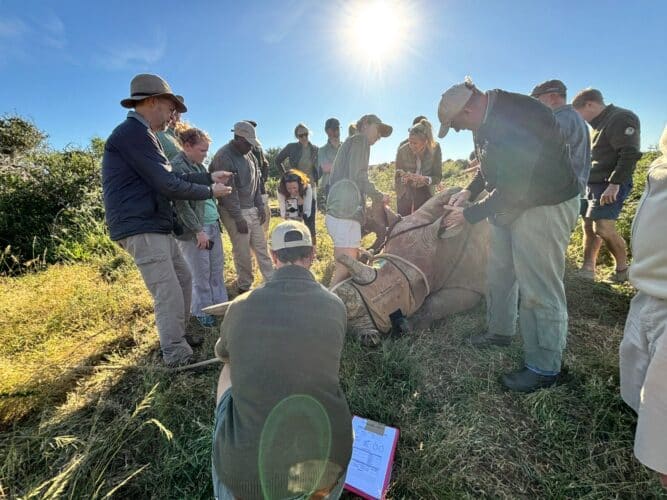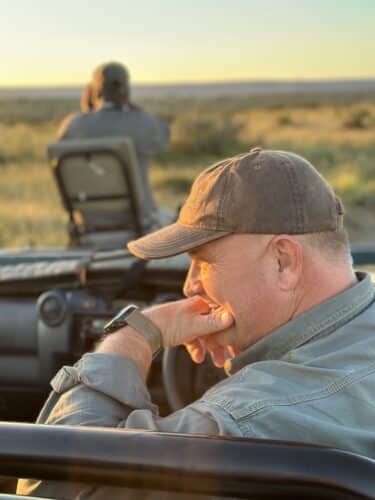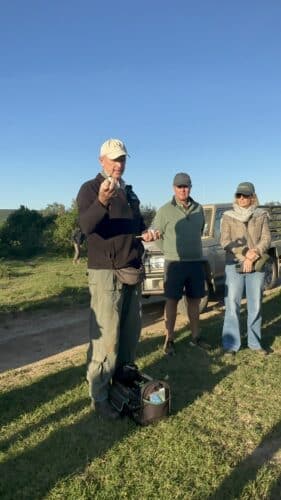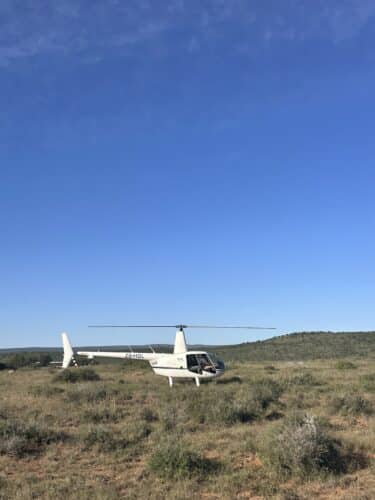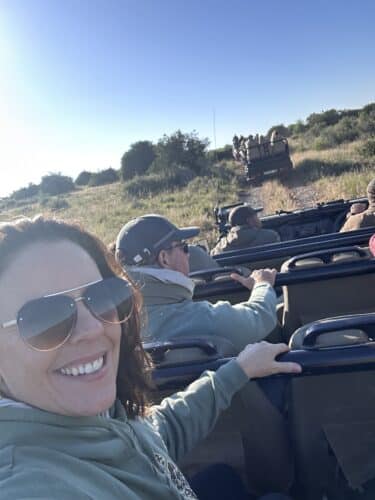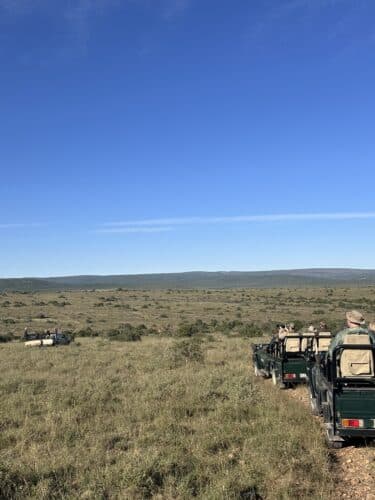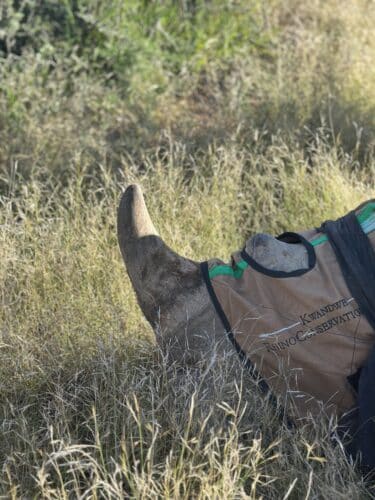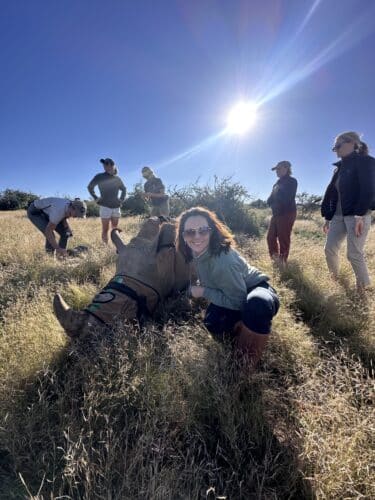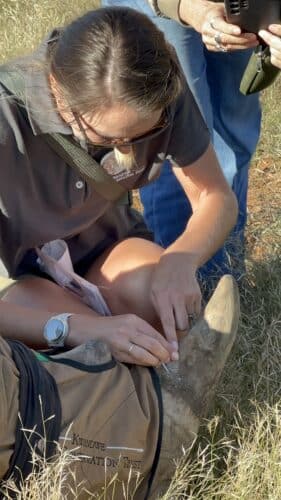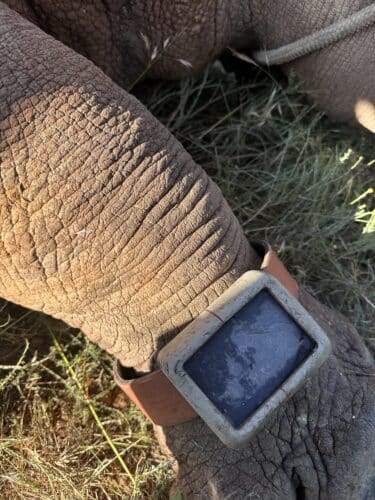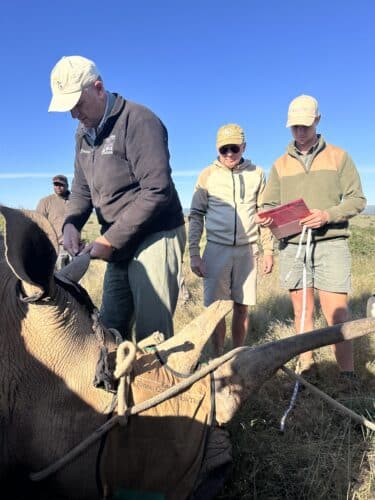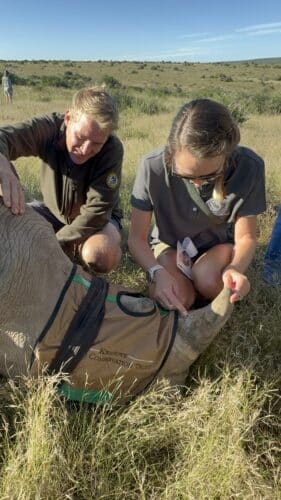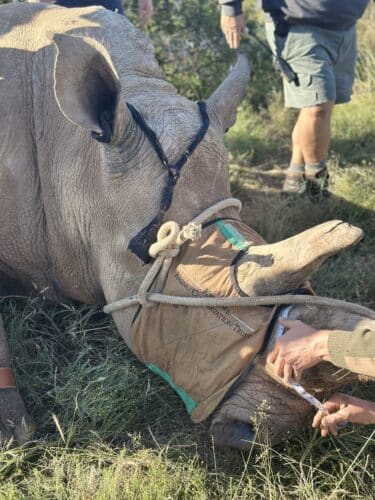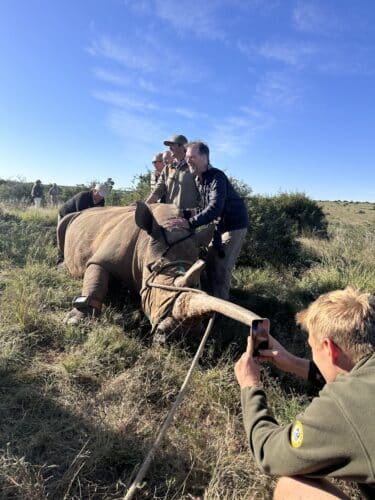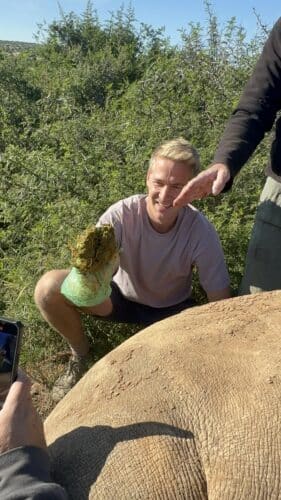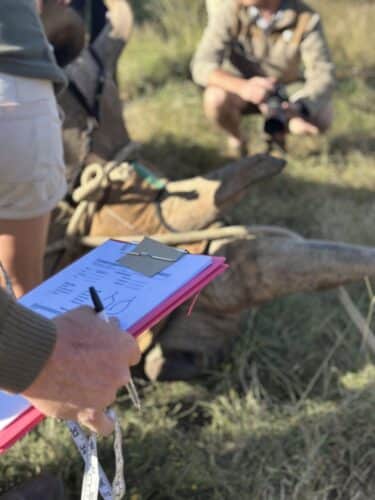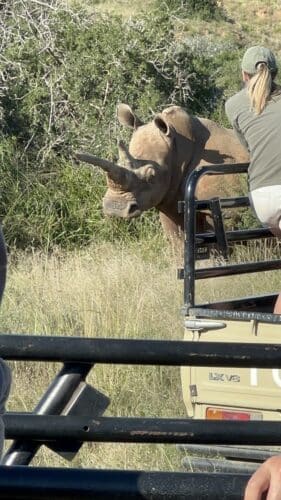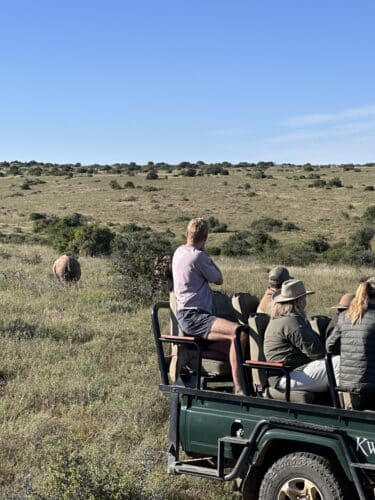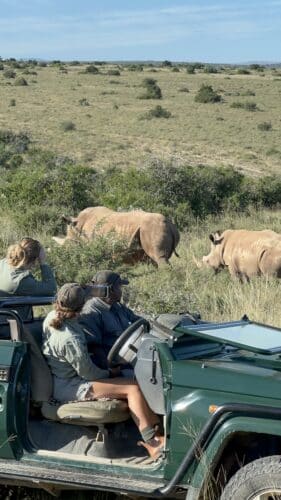Kwandwe Private Game Reserve
is in South Africa’s Eastern Cape, a special destination that has flown under the radar of many safari enthusiasts. While it may be outside the well-known Kruger area and not located near large cities, Kwandwe offers something truly exceptional for the discerning conservation-minded traveler. This magnificent 74,000+ acre reserve, whose name means “place of the blue crane” in Xhosa, is home to one of Africa’s greatest concentrations of both black and white rhinos.
Being blessed to return for a second rhino conservation experience at Kwandwe proved even more rewarding than my first encounter. Sometimes the most meaningful journeys are those we take twice – the second time with deeper understanding, greater appreciation, and eyes wide open to nuances we might have missed before.
The Reality of rhino conservation in action
Where Kwandwe truly excels is in its rhino conservation efforts, and rightly so. Black rhinos remain critically endangered with only about 6,400 left in the world, while white rhinos are classified as near threatened with approximately 10,000 adults remaining. The demand for rhino horns, primarily in Asia for traditional medicine, continues to threaten these magnificent creatures. However, Kwandwe’s thriving population represents hope – a testament to millions of dollars invested annually in state-of-the-art protection including solar-powered ankle collars, drones, micro-chipping, computer monitoring, armed guards, and an anti-poaching K9 unit.
During planned conservation events, when new rhinos need tracking collars, ear notching for identification, or medical treatment, guests can join the veterinary team and rangers. It’s an awesome hands-on experience made available when it’s happening for just eight guests. Don’t be fooled – this is not just observation, it’s active participation in critical conservation work. Be prepared to get hands on.
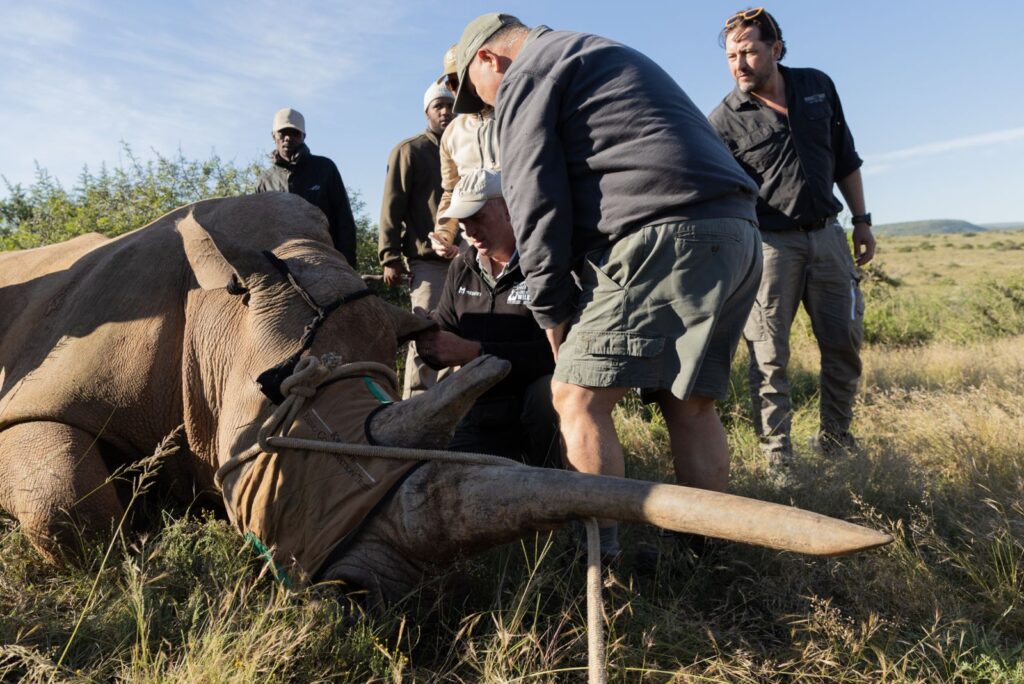
A second time, a deeper understanding
My second experience began much like the first – education from the head veterinarian and team about rhino immobilisations, while a helicopter buzzed overhead, identifying our target rhino. This time, I knew what to expect when we encountered an adult female white rhino and her calf.
The moment that had been traumatic during my first visit – watching the baby shake after being tranquilised – no longer frightened me. I understood now that this trembling was simply how the muscular system reacts to anesthetic. The veterinary team’s reassurances from my previous visit had prepared me, transforming anxiety into informed observation. To be fair, it still makes any mother put hand on heart for a moment, wanting the best for that baby.
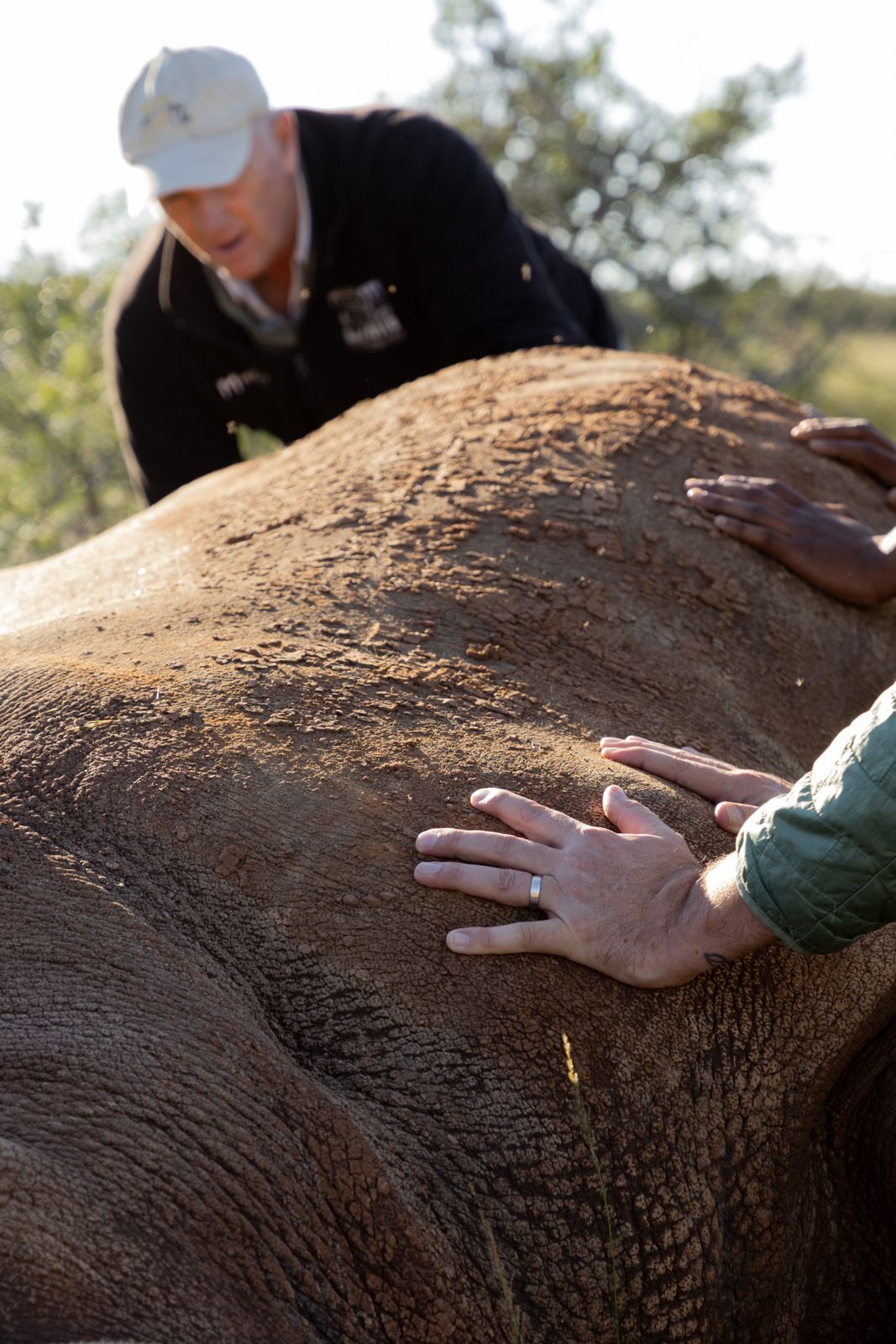
Hands-on is an understatement
The phrase “hands-on” barely captures the depth of involvement. We pulled off ticks, collected hair samples for DNA analysis, measured horn length and assisted with ear notching – a note to self: don’t get close if you’re squeamish about blood. Even stool samples were collected, though I didn’t volunteer for that particular task (editor’s note – well done Doug!)! The phenomenal team guided us through every step of the process, encouraging questions and ensuring we understood the importance of each procedure while not wasting any time.
This isn’t a casual encounter – it’s a focused, intensive session where everyone moves with intention and purpose because you’re up against the clock. You witness the incredible precision and care of the veterinary team, their expertise evident in every considered movement around these vulnerable giants.
The awakening: Nature’s protective instincts
When the time came to reverse the anesthetic, we moved quickly to our vehicles to observe the awakening from a safe distance. Just like my first experience, it was a mother and calf, and watching this reunion remains one of the most rewarding wildlife moments imaginable.
The sequence was the same both times, but it didn’t lose its power: the baby wakes, searching for mum, while the mother regains consciousness with full awareness of her surroundings immediately on high alert scanning the area. That natural instinct to protect kicks in the moment consciousness returns – she quickly connects with her baby to ensure safety. It’s a profound reminder of the maternal bonds that transcend species.
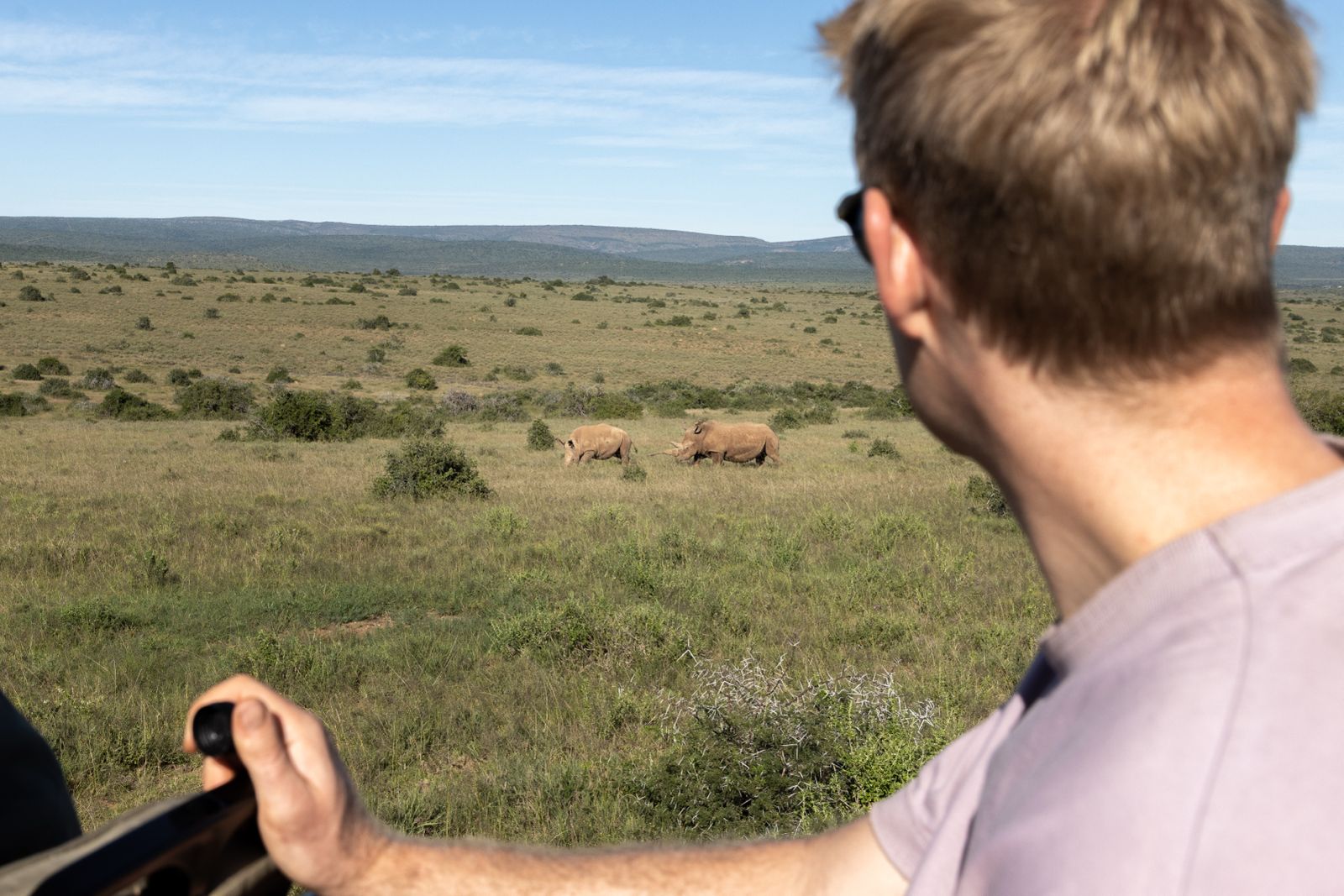
Not for everyone, but transformative for some
This experience isn’t for everyone. You must genuinely want to understand the importance of this conservation work and be comfortable witnessing such magnificent beasts in their most vulnerable state. It’s confronting, even the second time around – seeing these ancient, powerful creatures lying unconscious, dependent on human intervention for their survival and protection.
But the joy and awe of touching their skin, feeling their sought-after horns (tragically coveted for all the wrong reasons), creates an unbreakable connection to these incredible animals. There’s something profoundly moving about this intimate contact with creatures that have roamed Earth for millions of years.
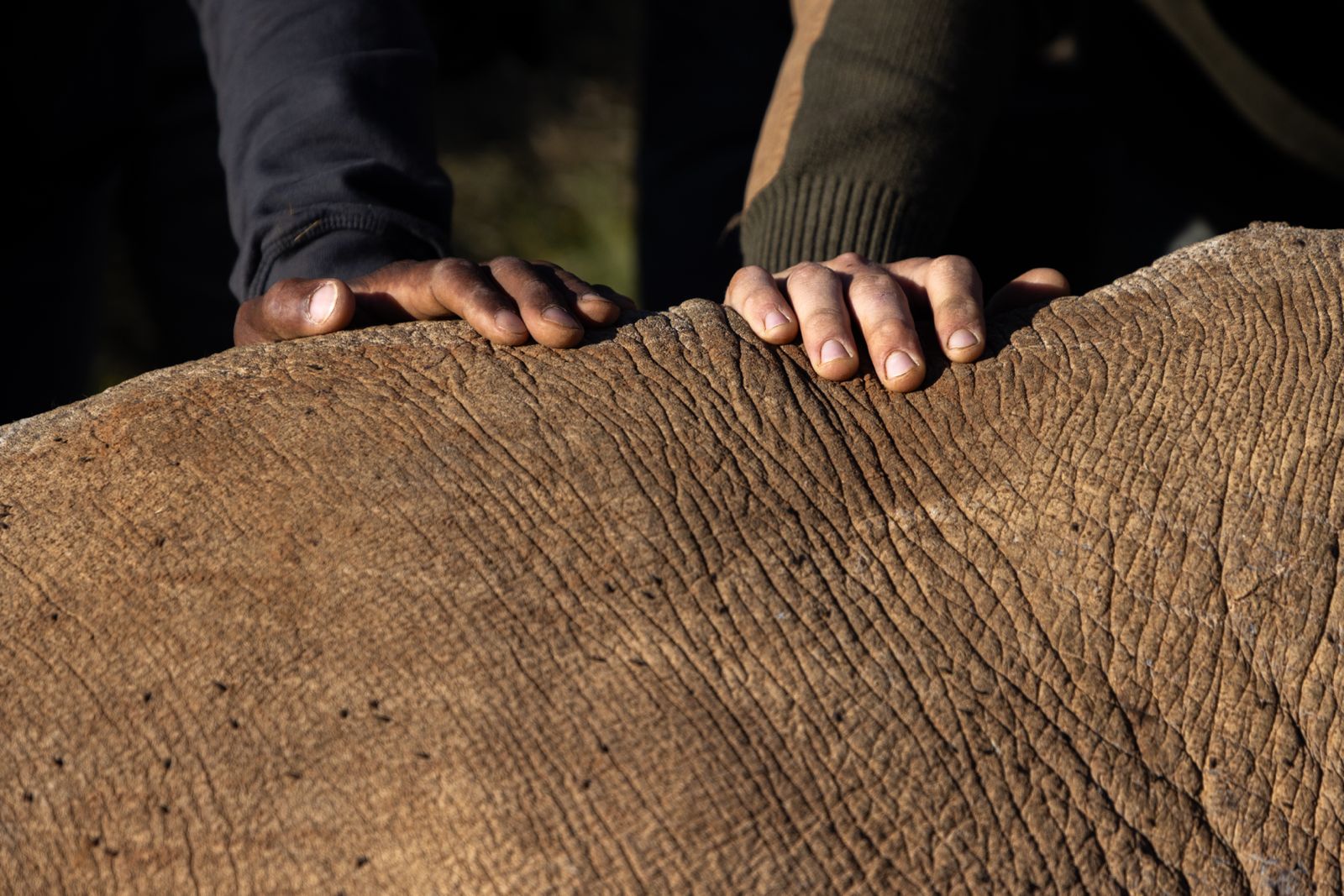
A soul-stirring connection to ancient times
Kwandwe is powerful on the soul in ways that extend beyond the rhino experience itself. The reserve connects you with ancient times through the wildlife you witness, the unchanged landscapes rolling across endless horizons, and the passionate team dedicated to sharing stories of wilderness and wildlife. They remind us constantly of our role as custodians and protectors, ensuring these magnificent creatures have a guaranteed future.
The experience transforms you from observer to participant in one of conservation’s most critical battles. You leave not just with incredible memories and photographs, but with a deeper understanding of what’s at stake and what it takes to preserve these incredible animals for future generations.
Planning your conservation journey
These immobilisations are conducted only when needed for legitimate conservation purposes – never merely for show or guest entertainment. As Kwandwe’s founder and managing director Angus Sholto Douglas emphasised “if there’s a conservation need and guests are willing to make the donation, the experience can be arranged with advance notice.”
For travellers passionate about rhinos, interested in conservation, or seeking something truly unique on their safari, this represents one of the most meaningful wildlife experiences available. It’s an opportunity to contribute directly to conservation efforts while gaining unprecedented access to these magnificent creatures.
After more than two decades of safari experiences, this remains among the most impactful encounters I’ve had with African wildlife – made even more meaningful the second time around, with deeper appreciation for the critical work being done to ensure these ancient giants continue to roam the African landscape for generations to come.
We’re here if you’re ready to experience this for yourself – or something else equally rewarding and powerfully moving.
